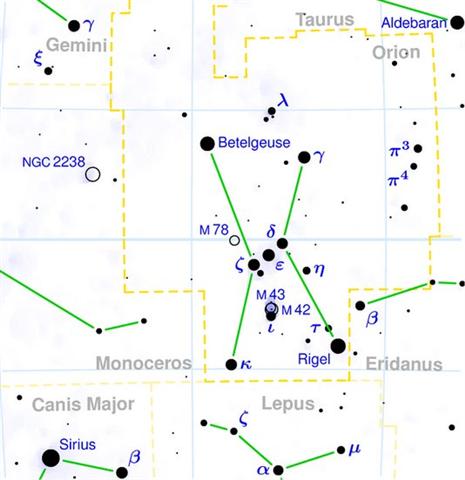Let's begin again from my assumed date Mrigashīrsha 1. Here Metoro did not indicate any 'birth', although there was a pair of flanking hanau. Instead he repeatedly said tagata, maybe because Sun had passed beyond the 4 weeks of Taurus and entered the month of Orion. Yet, the last star of the Bull - his 'zayin', ζ, Heavenly Gate, at the tip of his horn in the south - rose in June 13 (mixing, so to say, with the 'cooking tripod' of the Heka stars). Possibly the result was hua te tagata - as when Ulu sacrificed his head to produce nourishment for his little son Moku-ola (the Living Island):
And, we should remember, the first star of Orion (Rigel) rose already in RA day 78 - which is an important number in the rongorongo texts because it is equal to the synodic cycle of Mars. Rigel (the 'foot') rose 5 days before Heka (λ). I have added reconstructed dates for the nakshatra station Mula as they can be counted from Wei (the Tail, ε Scorpii) in RA day 254. Mula is like Ardra a 'long bone', ending in RA day 276.
"In other lunar zodiacs they [the triplet of Heka stars] were the Sogdian Marezānā, and the Khorasmian Ikhma, the Twins; the Persian Aveçr, the Coronet; and the Coptic Klusos, Watery. They also were the 3rd manzil, Al Hak'ah; the sieu Tzee, or Tsuy He, the Beak, or Pouting Lips, anciently Tsok, which Reeves gave as Keo; and the nakshatra Mrigaçiras, or Mrigaçirshā, the Head of the Stag ..." (Allen) The Stag and his head we recognize as the person who stole the fire: ... A man had a daughter who possessed a wonderful bow and arrow, with which she was able to bring down everything she wanted. But she was lazy and was constantly sleeping. At this her father was angry and said: 'Do not be always sleeping, but take thy bow and shoot at the navel of the ocean, so that we may get fire.' The navel of the ocean was a vast whirlpool in which sticks for making fire by friction were drifting about. At that time men were still without fire. Now the maiden seized her bow, shot into the navel of the ocean, and the material for fire-rubbing sprang ashore. Then the old man was glad. He kindled a large fire, and as he wanted to keep it to himself, he built a house with a door which snapped up and down like jaws and killed everybody that wanted to get in. But the people knew that he was in possession of fire, and the stag determined to steal it for them. He took resinous wood, split it and stuck the splinters in his hair. Then he lashed two boats together, covered them with planks, danced and sang on them, and so he came to the old man's house. He sang: 'O, I go and will fetch the fire.' The old man's daughter heard him singing, and said to her father: 'O, let the stranger come into the house; he sings and dances so beautifully.' The stag landed and drew near the door, singing and dancing, and at the same time sprang to the door and made as if he wanted to enter the house. Then the door snapped to, without however touching him. But while it was again opening, he sprang quickly into the house. Here he seated himself at the fire, as if he wanted to dry himself, and continued singing. At the same time he let his head bend forward over the fire, so that he became quite sooty, and at last the splinters in his hair took fire. Then he sprang out, ran off and brought the fire to the people ... In the Babylonian zodiac he was depticted standing head to head with the preceding Horse:
In order to remember the position of the Stag in the nakshatra structure I will change from Deer's head to Stag's head:
Once the Stag's head was like a little crown (Aveçr, Coronet) before the apex of the summer solstice. Together with α (Betelgeuze) and γ (Bellatrix) they formed the Babylonian Kakkab Sar, the Constellation of the King:
| ||||||||||||||||||||||||||||||||||||||||||||||||||||||||||||||||||||||||||||||||||||||||||||||||||||||||||||||||||||||||||||||||||||||






